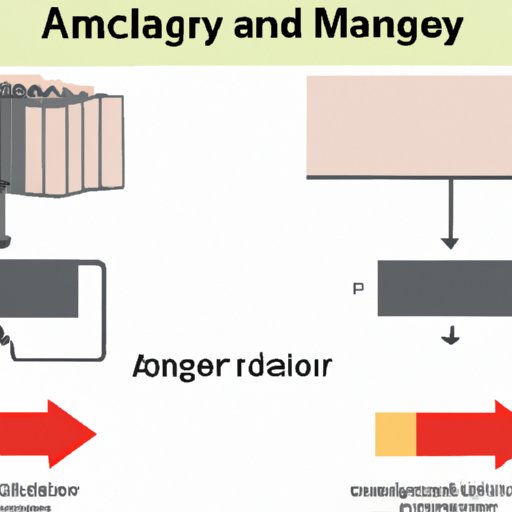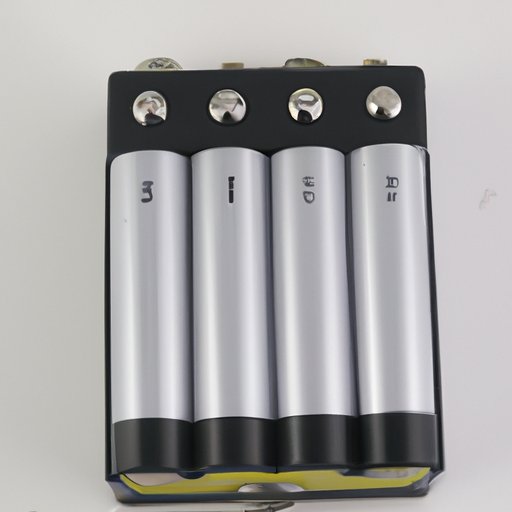Introduction
AGM battery technology is a type of rechargeable battery that has become increasingly popular in recent years. AGM stands for Absorbed Glass Mat, and it refers to the type of separator material used in the battery. AGM batteries are typically made from lead-acid cells and have a number of advantages over other battery technologies. In this article, we will explore the different types of AGM batteries, their advantages and disadvantages, and how they work.

What You Need to Know About AGM Batteries
AGM batteries come in a variety of sizes and capacities, depending on their intended use. The most common types include deep cycle batteries, starting batteries, and marine batteries. Deep cycle batteries are designed for long-term, low-current applications such as RV or solar systems. Starting batteries are designed for short-term, high-current applications such as automotive engines. Marine batteries are designed for both starting and deep cycle applications.
The main advantages of AGM batteries are their high energy density and deep discharge capabilities. They are also highly efficient, meaning they can be recharged quickly and hold their charge for a long period of time. AGM batteries are also very durable, with a lifespan of up to 10 years. However, they are more expensive than other types of batteries, and they require special care and maintenance to ensure peak performance.
An In-Depth Look at AGM Battery Technology
AGM batteries are constructed using lead-acid cells, which consist of an electrolyte solution and two plates (positive and negative). The plates are separated by a glass mat separator, which absorbs the electrolyte. This design allows for increased surface area between the plates and improved conductivity, resulting in higher energy density and lower internal resistance.
The components of an AGM battery include the positive and negative plates, a separator, and a container. The positive and negative plates are made of lead and lead oxide. The separator is made of a non-woven, absorbent glass fiber mat. The container is made of a hard plastic material and is sealed to prevent leaks.
When using AGM batteries, it is important to take safety precautions. AGM batteries contain sulfuric acid, which is corrosive and can cause skin irritation if it comes into contact with skin. It is important to wear protective clothing and safety glasses when working with AGM batteries.

Understanding How AGM Battery Technology Works
AGM batteries can be charged using a variety of methods, including constant voltage, pulse charging, and float charging. Constant voltage charging is the most common method and involves applying a voltage above the battery’s resting voltage until the battery is fully charged. Pulse charging is a more complex method that involves applying a series of pulses of varying voltages until the battery is fully charged. Float charging is the simplest method and involves keeping the battery at a constant voltage until it is fully charged.
The amount of time it takes to charge an AGM battery depends on several factors, including the type of charger being used, the capacity of the battery, and the ambient temperature. Generally speaking, it takes about 8 hours to fully charge an AGM battery.
Proper maintenance and care is essential for extending the life of an AGM battery. It is important to keep the battery clean and free of dirt and debris. It is also important to regularly check the electrolyte level and top off with distilled water as needed. Finally, it is important to store the battery in a cool, dry place away from direct sunlight.
AGM Battery Advantages
AGM batteries offer several advantages over other battery technologies. For starters, they are highly efficient, meaning they can be recharged quickly and hold their charge for a long period of time. Additionally, they are much more durable than other types of batteries, with a lifespan of up to 10 years.
AGM batteries are also more environmentally friendly than other types of batteries. They contain no toxic materials such as lead or mercury, and they do not emit any harmful gases during operation. This makes them ideal for use in applications where environmental protection is a priority.
Common applications for AGM batteries include automotive and marine vehicles, renewable energy systems, UPS systems, and backup power systems. AGM batteries are also becoming increasingly popular as a replacement for traditional lead-acid batteries in golf carts and electric scooters.
Conclusion
In conclusion, AGM batteries offer several advantages over other battery technologies. They are highly efficient, durable, and environmentally friendly. They are also relatively easy to maintain and can be used in a variety of applications. If you are looking for a reliable, long-lasting power source, AGM batteries may be the perfect choice for you.
To sum up, AGM battery technology offers many benefits compared to other battery technologies. AGM batteries are highly efficient, durable, and environmentally friendly. They are also relatively easy to maintain and can be used in a variety of applications. If you’re looking for a reliable, long-lasting power source, AGM batteries may be the perfect choice for you.
(Note: Is this article not meeting your expectations? Do you have knowledge or insights to share? Unlock new opportunities and expand your reach by joining our authors team. Click Registration to join us and share your expertise with our readers.)
